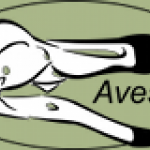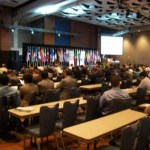Science Practice
Marie-Claire Shanahan is an Assistant Professor of Science Education at the University of Alberta, in Edmonton, Alberta, Canada. As a former science teacher, she was always surprised by the ways that students talked themselves out of liking science - and she decided to do something about it. She now researches the social and cultural aspects of science and science education, especially those related to language and identity.
Marie-Claire and I first met online, then also in Real World when she attended ScienceOnline 2010, after which I interviewed her for my blog. You can check out her…
Last week, my SciBling Jason Goldman interviewed me for his blog. The questions were not so much about blogging, journalism, Open Access and PLoS (except a little bit at the end) but more about science - how I got into it, what are my grad school experiences, what I think about doing research on animals, and such stuff. Jason posted the interview here, on his blog, on Friday, and he also let me repost it here on my blog as well, under the fold:
Here at Thoughtful Animal headquarters, we're starting a new series of seven-question interviews with people who are doing or have done animal…
Deposit it with people who guarantee your samples will remain frozen:
The new issue of Journal of Science Communication is now online (Open Access, so you can download all PDFs for free). Apart from the article on blogging that we already dissected at length, this issue has a number of interesting articles, reviews, perspectives and papers:
Users and peers. From citizen science to P2P science:
This introduction presents the essays belonging to the JCOM special issue on User-led and peer-to-peer science. It also draws a first map of the main problems we need to investigate when we face this new and emerging phenomenon. Web tools are enacting and facilitating new…
Aves 3D is a 'three dimensional database of avian skeletal morphology' and it is awesome!
This is an NSF-funded project led by Leon Claessens, Scott Edwards and Abby Drake. What they are doing is making surface scans of various bones of different bird species and placing the 3D scans on the website for everyone to see and use. With simple use of the mouse or arrow buttons, one can move, zoom and rotate each image any way one wants.
The collection is growing steadily and already contains some very interesting bones from a number of species, both extinct and extant. You can see examples of…
I had a good fortune to hear Dr. Lefkowitz speak once. Great guy. From the press release:
The prestigious BBVA Foundation Frontiers of Knowledge Award in the Biomedicine category goes this year to Robert J. Lefkowitz, MD, James B. Duke Professor of Medicine and Biochemistry and a Howard Hughes Medical Institute (HHMI) investigator at Duke University Medical Center.
This is only the second year the award has been given.
Dr. Lefkowitz's research has affected millions of cardiac and other patients worldwide. Lefkowitz proved the existence of, isolated, characterized and still studies G-protein-…
Background
When Futurity.org, a new science news service, was launched last week, there was quite a lot of reaction online.
Some greeted it with approval, others with a "wait and see" attitude.
Some disliked the elitism, as the site is limited only to the self-proclaimed "top" universities (although it is possible that research in such places, where people are likely to be well funded, may be the least creative).
But one person - notably, a journalist - exclaimed on Twitter: "propaganda!", which led to a discussion that revealed the journalist's notion that press releases are…
Leo Laporte and Kirsten Sanford (aka Dr.Kiki) interviewed (on Twit.tv) Jason Hoyt from Mendeley and Peter Binfield from PLoS ONE about Open Access, Science 2.0 and new ways of doing and publishing science on the Web. Well worth your time watching!
My regular readers probably remember that I blogged from the XXVI International Association of Science Parks World Conference on Science & Technology Parks in Raleigh, back in June of this year.
I spent the day today at the headquarters of the Research Triangle Park, participating in a workshop about the new directions that the park will make in the future. It is too early to blog about the results of this session, though the process will be open, but I thought this would be a good time to re-post what I wrote from the June conference and my ideas about the future of science-technology…
Two recent events put in stark relief the differences between the old way of doing things and the new way of doing things. What am I talking about? The changing world of science publishing, of course.
Let me introduce the two examples first, and make some of my comments at the end.
Example 1. Publishing a Comment about a journal article
My SciBling Steinn brought to our collective attention a horrific case of a scientist who spent a year fighting against the editors of a journal, trying to have a Comment published about a paper that was, in his view, erroneous (for the sake of the argument it…
A run-down of good recent stuff, highly recommended for your weekend reading and bookmarking:
PLoS One: Interview with Peter Binfield:
...In my view PLoS ONE is the most dynamic, innovative and exciting journal in the world, and I am proud to work on it.
In many ways PLoS ONE operates like any other journal however it diverges in several important respects. The founding principle of PLoS ONE was that there are certain aspects of publishing which are best conducted pre-publication and certain aspects which are best conducted post-publication. The advent of online publishing has allowed us to…
Science Online London is next week. I really wanted to go this year, but hard choices had to be made....eh, well.
For those of you who, like me, cannot be there in person, there are plenty of ways to follow the meeting virtually. Follow @soloconf and the #solo09 hashtag on Twitter. Join the FriendFeed room. Check out the Facebook page. And of course there will be a lot of blogging, including in the Forums at Nature Network.
And for those of you who have computers with enough power and good graphics cards, another option is to follow the conference in Second Life - check that link to see how.
Open Access and the divide between 'mainstream' and 'peripheral' science (also available here and here) by Jean-Claude Guédon is a Must Read of the day. Anyone have his contact info so I can see if he would come to ScienceOnline'10?
There is a whole bunch of articles about science publication metrics in the latest ESEP THEME SECTION - The use and misuse of bibliometric indices in evaluating scholarly performance. Well worth studying. On article-level metrics, there are some interesting reactions in the blogosphere, by Deepak Singh, Bjoern Brembs, Duncan Hull, Bill Hooker and Abhishek Tiwari…
A few years ago, I read Mary Roach's first book, Stiff: The Curious Lives of Human Cadavers and absolutely loved it! One of the best popular science books I have read in a long time - informative, eye-opening, thought-provoking and funny. Somehow I missed finding time to read her second (Spook: Science Tackles the Afterlife - I guess just not a topic I care much about), but when her third book came out, with such a provocative title as Bonk: The Curious Coupling of Science and Sex, I could not resist.
And I was not disappointed. It is informative, eye-opening, thought-provoking and funny.…
Everyone and their grandmother knows that Impact Factor is a crude, unreliable and just wrong metric to use in evaluating individuals for career-making (or career-breaking) purposes. Yet, so many institutions (or rather, their bureaucrats - scientists would abandon it if their bosses would) cling to IF anyway. Probably because nobody has pushed for a good alternative yet. In the world of science publishing, when something needs to be done, usually people look at us (that is: PLoS) to make the first move. The beauty of being a path-blazer!
So, in today's post 'PLoS Journals - measuring impact…
A few months ago, I posted about a very innovative way of using Twitter in science - monitoring fish catch by commercial fishermen.
The first phase of the study is now complete and the results are published in the journal Marine and Coastal Fisheries: Dynamics, Management, and Ecosystem Science 2009; 1: 143-154: Description and Initial Evaluation of a Text Message Based Reporting Method for Marine Recreational Anglers (PDF) by M. Scott Baker Jr. and Ian Oeschger. It is relatively short and easy to read, so I recommend you take a look.
The next phase will continue with the program, with…
As you know, I gave two lectures here in Belgrade. The first one, at the University Library on Monday, and the second one at the Oncology Institute of the School of Medicine at the University of Belgrade. As the two audiences were different (mainly librarians/infoscientists at the first, mainly professors/students of medicine at the second) I geared the two talks differently.
You can listen to the audio of the entire thing (the second talk) here, see some pictures (from both talks) here and read (in Serbian) a blog post here, written by incredible Ana Ivkovic who organized my entire Belgrade…
A bunch of interesting Twitterers aggregated in NYC a couple of days ago at the 140 characters conference, discussing various aspects of and uses of Twitter. One of the sessions was about Twitter and Science, led by @thesciencebabe and @jayhawkbabe. I am very jealous I could not be there, but we can all watch the video of their session:
Happy to see the last slide, with @PLoS as one of the recommended Twitter streams to follow for those interested in science.

